Are you ready to unlock the potential of bifacial solar panels? These cutting-edge panels are taking the solar industry by storm, generating energy from both sides and outperforming traditional monofacial panels. This blog post will explore bifacial solar panels, their unique features, types of solar cells used, installation techniques, applications, and how they compare to monofacial solar panels. Get ready to be amazed by the power of bifacial solar panels!
Key Takeaways
- Be amazed by the incredible dual-sided energy generation of bifacial solar panels!
- Experience revolutionary technology with transparent backsheet or dual glass design options!
- Maximize your return on investment and reduce reliance on fossil fuels with these exciting panels from top manufacturers such as LG, Canadian Solar, Longi, Trina Solar & Yingli Solar!
Understanding Bifacial Solar Panels
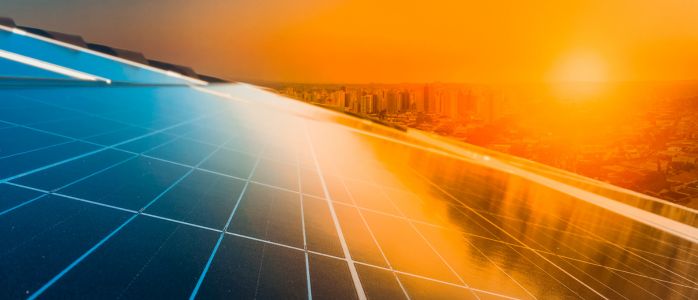
Imagine if your solar panels could generate energy from both sides – sounds too good to be true, right? Well, that’s precisely what bifacial solar panels do! These revolutionary panels have solar cells on both sides, allowing them to absorb photovoltaic solar energy from the front and back, resulting in increased energy generation.
First developed in Moscow, bifacial solar panels have come a long way, with manufacturers constantly pushing the boundaries of bifacial solar cell technology.
Dual-sided Energy Generation
The ability to generate energy from both sides is a distinct feature of bifacial solar panels that separates them from their monofacial counterparts. This dual-sided energy capture leads to efficiency gains between 11% and 23% compared to conventional monofacial solar panels.
This remarkable feature maximises energy output and takes advantage of the sunlight reflecting off the ground, making them perfect for ground-mounted installations in areas with frequent snowfall or arid desert conditions.
Transparent Backsheet or Dual Glass Design
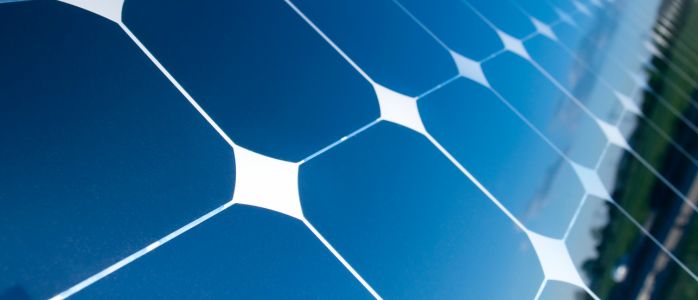
Bifacial solar panels come in two exciting designs: transparent backsheet and dual glass. Both designs allow for energy generation from the backside of the panel, but they each have their pros and cons.
The transparent backsheet design allows more light to reach the backside of the panel, resulting in increased energy generation. However, it may be slightly more vulnerable to damage from hail or wind.
On the other hand, the dual glass design provides extra protection from the elements but comes at a slightly higher price. Regardless of the design, bifacial solar panels promise to revolutionize how we generate clean energy.
Types of Solar Cells Used in Bifacial Panels
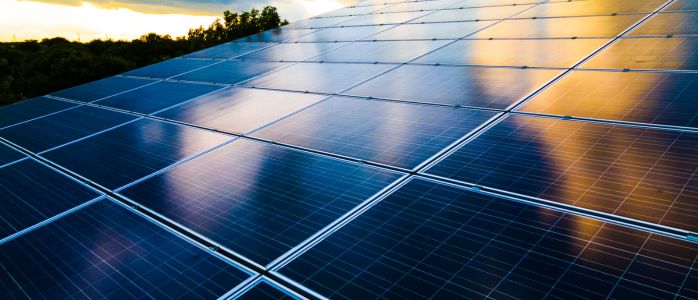
As opposed to traditional monofacial solar panels, bifacial solar panels use either monocrystalline or polycrystalline bifacial solar cells to maximize their energy generation potential. Both types of cells have their own set of characteristics, making them suitable for different applications and budgets.
In more detail, we’ll examine these two types of solar cells used in bifacial panels.
Monocrystalline Cells
Monocrystalline cells, a type of solar PV panels, are known for their high efficiency and premium price tag. Made from single silicon crystals, these cells sometimes boast efficiency levels of up to 20.6%. Their black PV cells with rounded edges give them a sleek, modern appearance.
However, their higher efficiency also comes with a higher cost than polycrystalline cells.
Polycrystalline Cells
On the other hand, polycrystalline cells are made from multiple silicon crystals and have a slightly lower efficiency than monocrystalline cells, typically ranging from 13% to 16%. Their lower efficiency makes them more affordable and an attractive option for those looking to balance performance and cost.
While they may not be as efficient as monocrystalline cells, polycrystalline cells still offer a great solution for those looking to harness the power of bifacial solar panels.
Maximizing Energy Output with Bifacial Solar Panels
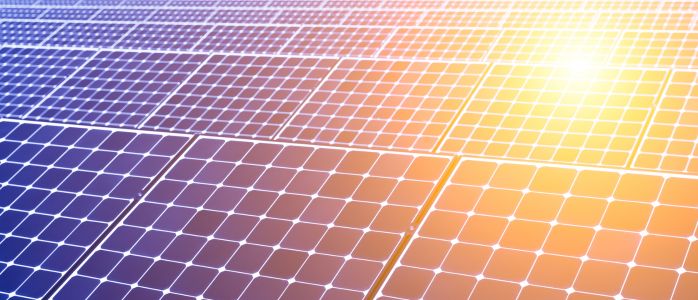
The true potential of bifacial solar panels lies in their ability to generate up to 30% more energy when installed near reflective surfaces and with proper installation techniques. Factors such as surface albedo and reflection play a significant role in maximizing energy output from these panels, as they can drastically increase the light reflected onto the back of the panel.
We will delve deeper into these factors and installation techniques.
Surface Albedo and Reflection
Surface albedo measures how much light is reflected off a surface, while reflection is the process of light bouncing off a surface. These factors are crucial in maximizing energy output from bifacial solar panels, as they can dramatically increase the amount of light reflected onto the back of the panel, thus significantly increasing the amount of energy generated.
For example, during the Salyut 5 space station mission, using bifacial panels resulted in an energy gain of up to 45% due to Earth’s albedo.
Installation Techniques
Proper installation techniques are vital for optimising energy generation from bifacial solar panels. Some of these techniques include:
- Installing the panel on a solar tracking system
- Optimizing the tilt angle
- Ground-mounted installations
- Using precise measurements and modelling to ensure maximum energy output
Implementing these installation techniques guarantees that your bifacial solar panels operate at peak performance, producing the necessary clean energy and reducing your environmental footprint.
Bifacial Solar Panel Applications
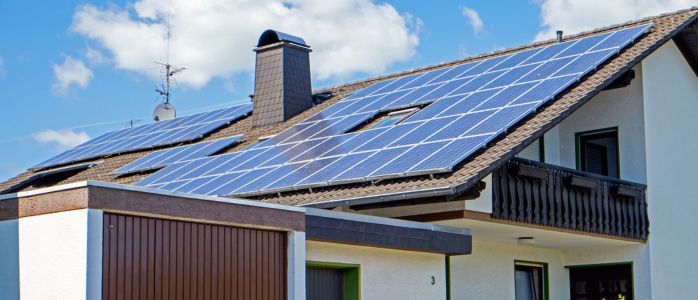
Bifacial solar panels, also known as bifacial modules, are suitable for various applications, from residential settings to large-scale commercial and utility projects. Their increased efficiency and flexibility make them an attractive option for those looking to harness the power of solar energy in various settings. To better understand how bifacial solar panels work, exploring their unique design and benefits is essential.
We will delve into the potential applications of bifacial solar panels in residential and commercial settings.
Residential Use
Bifacial solar panels can be used in residential settings. However, their efficiency may not be as high as in commercial applications due to factors such as installation and the surrounding environment.
However, when integrated into outdoor structures like pergolas or awnings, or installed near highly reflective surfaces, such as swimming pools or sandy areas, bifacial solar panels can still significantly boost energy generation. Their versatility and potential for increased energy output make them an attractive option for homeowners looking to reduce their reliance on fossil fuels and embrace clean energy.
Commercial and Utility-Scale Projects
Commercial and utility-scale projects greatly benefit from the increased efficiency of bifacial solar panels, especially when ground-mounted. These installations can take full advantage of the sunlight reflecting off the ground, generating even greater energy.
As the popularity of bifacial solar panels continues to grow, we can expect to see even more commercial and utility-scale projects taking advantage of this innovative technology to generate clean, renewable energy.
Comparing Bifacial and Monofacial Solar Panels
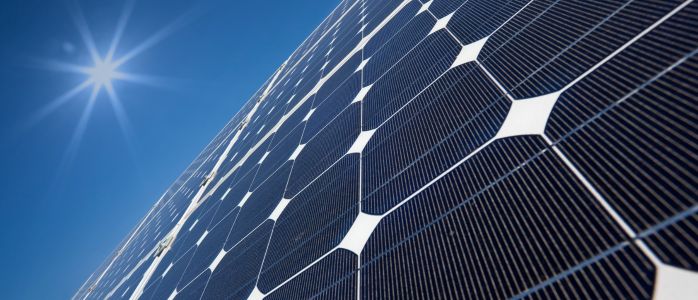
A comparison between bifacial and monofacial solar panels should consider their energy generation capabilities and their return on investment. Despite the higher initial cost of bifacial solar panels, their superior energy generation can offer a superior return on investment over time.
So, how do these two types of solar panels, including traditional solar panels, stack up regarding energy generation and return on investment?
Energy Generation Comparison
Depending on installation and environmental factors, bifacial solar panels generate up to 30% more energy than monofacial panels. This increased energy generation can be attributed to the dual-sided energy generation capabilities of bifacial panels, which allow them to capture sunlight from both the front and back sides.
When compared to monofacial panels, it’s clear that bifacial solar panels have the potential to generate significantly more energy and provide a better return on investment.
Cost and Return on Investment
While bifacial solar panels may cost more upfront, their increased energy generation leads to a better return on investment over time. Bifacial panels cost between 10 and 20 cents more per watt than monofacial solar panels. Still, their higher energy output can result in a higher return on investment over the system’s lifetime.
Bifacial solar panels are an attractive option for those looking to invest in clean, renewable energy when considering cost and energy generation.
Leading Bifacial Solar Panel Manufacturers
Leading manufacturers like LG, Canadian Solar, Longi, Trina Solar & Yingli Solar are pioneering the increasingly popular bifacial solar panel technology. With the entry of more companies into the market anticipated, the future of bifacial solar panels appears increasingly promising.
Stay tuned for more innovations and advancements in bifacial solar panels!
Summary
In conclusion, bifacial solar panels offer a unique and innovative solution to harnessing solar energy, generating up to 30% more energy than traditional monofacial panels. With their dual-sided energy generation capabilities, transparent backsheet or dual-glass design, and compatibility with both monocrystalline and polycrystalline cells, bifacial solar panels are revolutionizing the solar industry. Whether for residential, commercial, or utility-scale projects, these panels provide an efficient and environmentally friendly alternative to conventional solar panels. It’s time to unlock the power of bifacial solar panels and embrace the future of clean, renewable energy!
Frequently Asked Questions
Are bifacial solar panels worth it?
Bifacial solar panels are worth it, as they can generate up to 30% more power than regular mono panels. Enjoy the extra electricity and consider investing in bifacial solar panels!
What is the disadvantage of bifacial solar panels?
Bifacial solar panels can cost up to 10% more than monofacial solar panels and require specialised equipment for installation, making them more expensive. However, bifacial solar panels have the potential to generate up to 30% more energy than monofacial solar panels, making them a more cost-effective option in the long run.
Which is better bifacial vs Monofacial?
Bifacial solar panels are undoubtedly better than monofacial modules as they provide higher efficiency with fewer resources and are more durable in rough climates. They are also more cost-effective in the long run, requiring fewer modules to generate the same energy. Additionally, bifacial modules can be installed in various ways, allowing for more flexibility in design.
Do bifacial solar panels let light through?
Yes, bifacial solar panels let light through! They feature a transparent backside, which allows them to absorb energy from both sides. These panels are usually framed and have a lower efficiency rate than glass-glass panels.
What is the main difference between bifacial and monofacial solar panels?
Bifacial solar panels have a distinct advantage over monofacial panels, as they can generate energy from both sides of the panel. This means they can capture more energy from the sun and are, therefore more efficient than monofacial panels.
